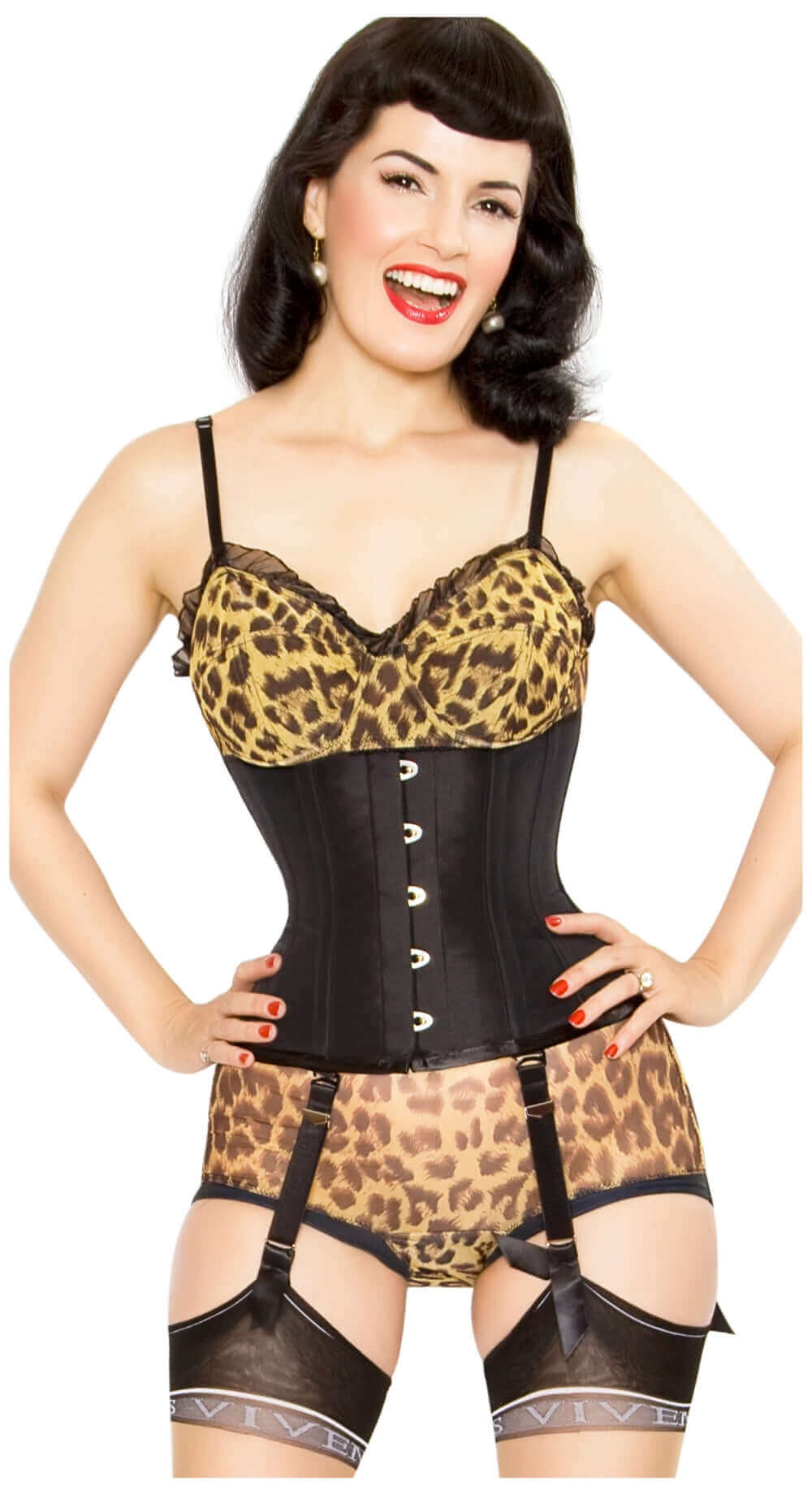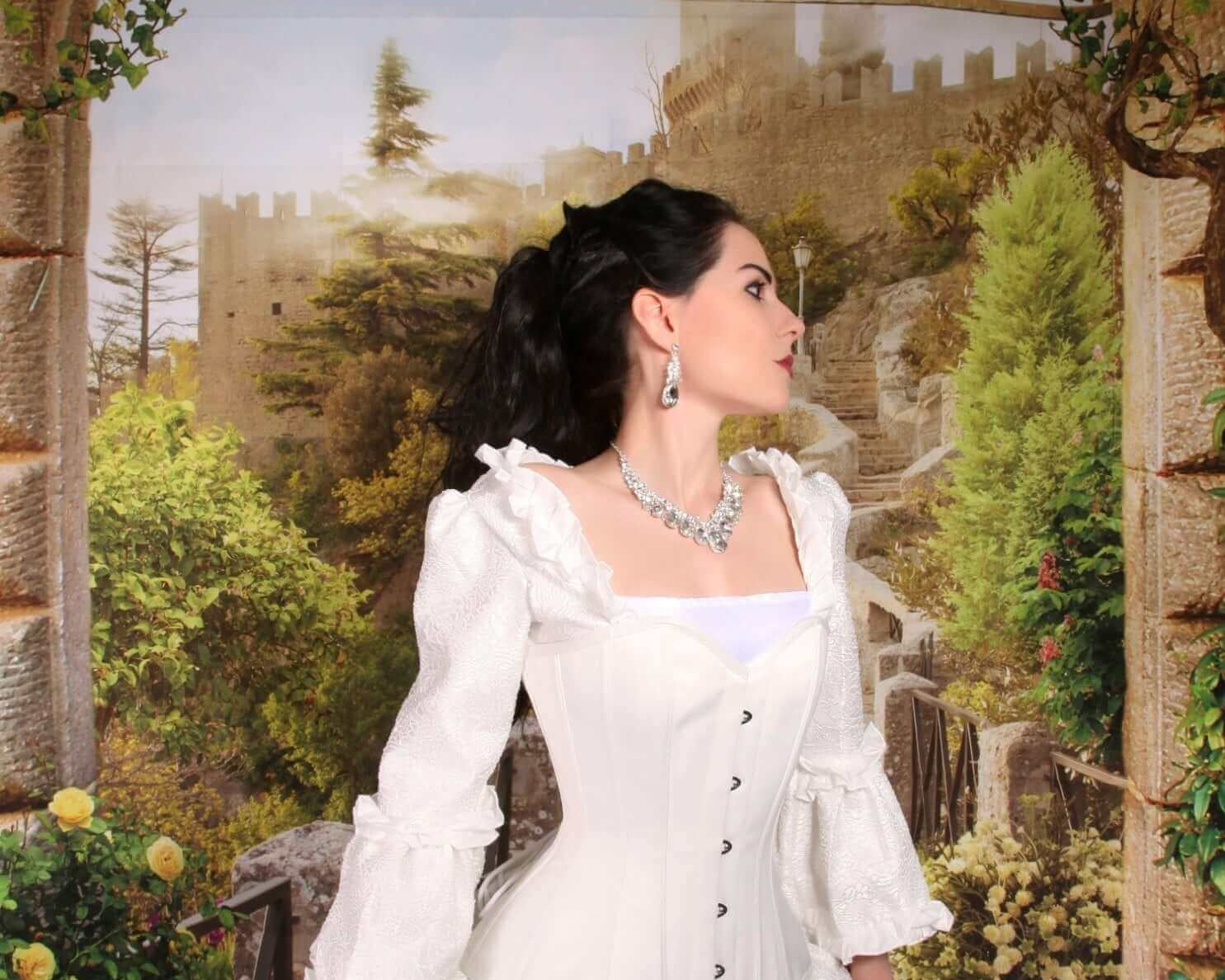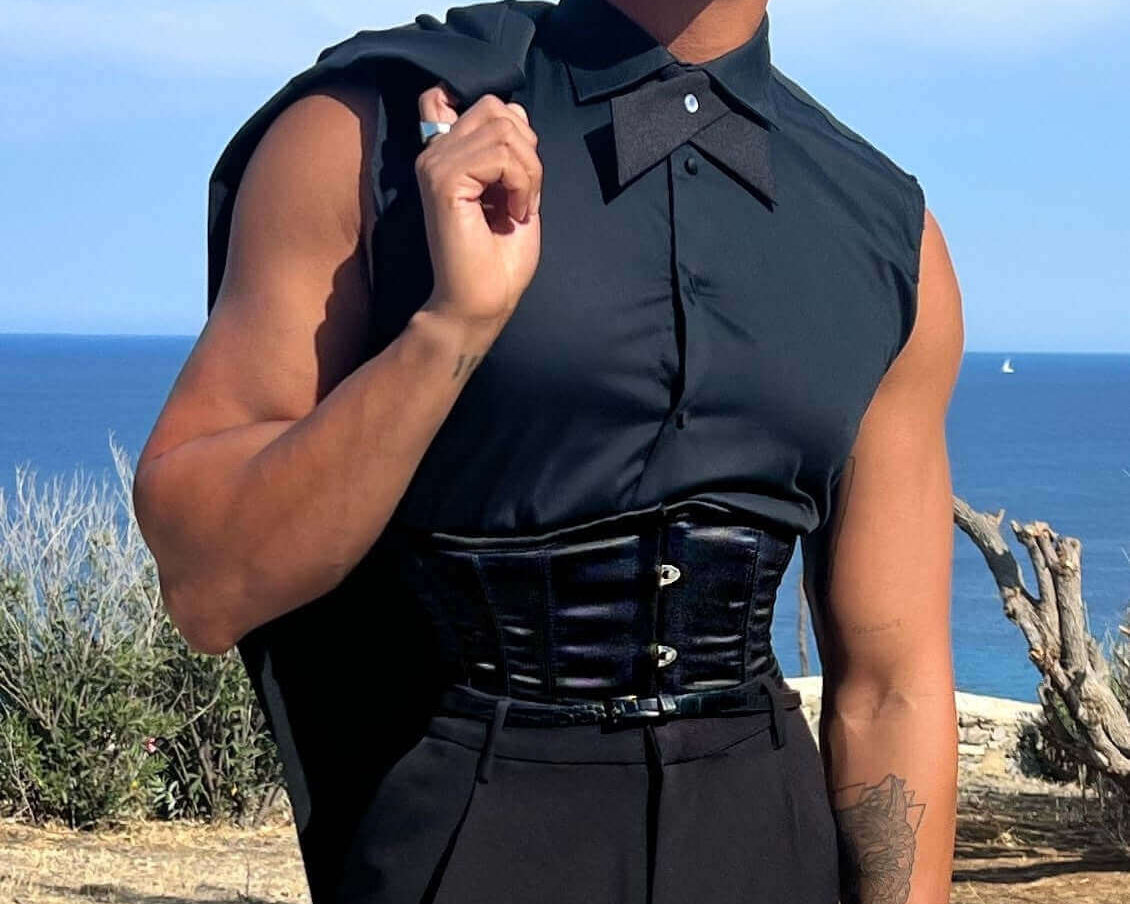The Anatomy of a Corset: Understanding Boning, Busks, and Lacing

There aren’t many fashions that survive centuries. Corsets are the exception. The thing is, if you really get to know them, you realise that corsets are not garments of fashion. They’re feats of engineering! Fabric, steel, structure, they have it all. And this can be really important to understand for anyone considering investing in one. Because when you know how corset boning, busks, modesty panels, grommets, and lacing work together, you’re in a much better position to choose a corset that’s comfortable, durable, and truly supportive.
So, what goes into making a truly good corset?
Unknotting the Anatomy of a Corset
Boning

What is corset boning?
Boning refers to the firm inserts that give the corset its shape and rigidity. They’re threaded through channels within the main body of the corset, providing reliable structure. Without boning, a corset is just fabric and lacing. From the sixteenth to the early nineteenth century, corset boning was made from baleen, which is a flexible keratin material from a whale's mouth – hence the term ‘whalebone’. But today, corsets use more sustainable boning materials.
What are the different types of boning?
Flat steel (rigid) boning
This is very stiff, and holds shape in one direction. It’s often used in places that need strong structure, such as either side of the busk (centre‑front) or alongside lacing/eyelets.
Spiral steel boning
Made from flattened steel springs, spiral steel boning is typically more flexible. It bends both “side to side” and “front‑to‑back,” making movement easier and giving more comfortable curves. It is often used in side seams or curved areas of the torso.
Plastic/synthetic boning (including synthetic “whalebone”)
This is used for lighter corsetry. It’s often less durable than the metal alternatives, and no good for waist training. However, it can be fine for fashion corsets or less-frequent wear.
Good quality indicators for boning
-
Steel rather than plastic, especially around high‑stress points.
-
Pre‑capped ends – In other words, the ends of boning are enclosed/finished so they can’t poke out through fabric.
-
Enough bones – More boning channels generally translates into better shape retention, especially with more aggressive waist reduction.
-
Appropriately placed boning types – Rigid (flat) where support is essential; more flexible (spiral) where curves need comfort.
The busk

What is the corset busk?
The busk is the rigid set of parts in the centre front of the corset that enables you to fasten the garment quickly. Traditionally, early corsets used single‑piece wooden or bone stays. Modern corsets use two matching steel strips – one side has hooks/loops (or studs and loops), the other has corresponding posts. This lets you close the corset without completely unlacing it.
Different busk variations
Straight busk
This is the basic busk form, with straight steel pieces that fasten together.
Spoon busk
This is a busk with lower parts that are “spooned” or dished to accommodate the belly. These are designed to help reduce bulging with tight lacing. However, spoon busks have trade‑offs. Although they can give a more uniform look, very tight lacing can cause discomfort or digging.
Quality indicators for a good busk
-
Should be made of strong, preferably stainless steel so it resists bending, corrosion, and fatigue.
-
The busk should align neatly, with both halves matching cleanly when closed.
-
The busk should be well sewn into its channels so that it doesn’t twist or shift with wear.
-
A modesty panel or placket in front can protect skin during fastening and cover the small gap between busk halves. More on that below.
Lacing, grommets, modesty panels and edging
When you first start looking at corsets, these are the bits that first catch the eye. They’re pretty and appealing. But their construction is also crucial to comfort, durability, and support.
Grommets/eyelets
Grommets are the reinforced metal rings through which the lacing is threaded. Some corsets have stamped or inserted eyelets instead. Either way, they need to be strong, evenly spaced, and reinforced by strong fabric and/or boning around them. Poorly set grommets will tear under tension.
Many quality corsets use steel grommets, with double‑layered fabric, plus flat steel boning on either side of the lacing channel to distribute stress.
Lacing

The lace/cord used in corsetry should be strong (nylon, polyester blend, or other durable fibre), relatively narrow but not so slippery that it loosens.
And lacing patterns matter. They impact evenness, symmetry, fit, and pressure.
Modesty panels and plackets
Back modesty panel (or lacing panel/guard)
This is a panel of fabric or lining behind the laces at the back of the corset that both hides the skin/folds (“back cleavage”) and protects the skin from rubbing, pressing, or abrasion as the corset is tightened.
Front modesty placket/panel
This sits beneath the busk in the front of the corset and shields skin/tummy from the busk’s edges, and hides the small opening between busk halves. Not all corsets have one, but it can add comfort and a clean finish.
Bindings and edging
The edges of your corset (top, bottom, around the arms/bust) are finished with binding. This is a strong folded fabric, often with multiple layers, and sometimes bias cut. A good binding prevents fraying and binding rollover. It also ensures comfort.
Panel construction and waist tape
Although sometimes less visible, these internal features strongly impact how a corset fits and performs.
Panels/seams
Corsets are made from panels sewn together; their shape determines how the corset contours to the torso. Curved seams over ribs, bust, side hips, etc., require flexible boning; straighter seams lend to flat steel.
Waist tape
A hidden, no‑stretch tape (often cotton or twill) sewn into the inside of the corset, around the waistline, helps prevent the corset itself from stretching or distorting. It helps maintain the waist size and shape under strain.
Putting it all together

When deciding which corset you wish to buy, there are a couple of flags to look out for if you want it to last, reduce effectively, and feel comfortable.
|
Component |
What to Look For |
|
Boning |
Steel (flat or spiral) rather than only plastic; a sufficient number of boning channels; correct type in correct locations (flat near front/back, spiral in curves). |
|
Busk and front closure |
Strong steel busk, clean closure, possibly with front modesty panel to protect skin and cover gaps. |
|
Grommets and lacing |
Quality metal grommets, reinforcement around eyelets, durable lacing cord; modesty panel at back. |
|
Seams, binding and internal tapes |
Neat seams that match shape; strong binding; internal waist tape; multiple layers or lining if needed. |
Also, fit is crucial. Even a top‑quality corset won’t work if your measurements are off or if the shape doesn’t suit your body. Always check sizing guides (True Corset offers good sizing and fitting info) and consider whether you prefer underbust or overbust. Overbust corsets give bust support, underbust corsets offers more flexibility and ease for some.
Why these details matter
Comfort
Poor boning, badly placed grommets, worn busks, or sharp edges will dig in, rub, or even injure with time. Good materials and solid construction prevent that.
Durability
Corsets are, by design, under tension. They have to resist forces from lacing, movements, and posture. Steel boning, quality busks, and reinforced eyelets ensure your corset doesn’t lose shape, rip, or warp.
Shape and performance
If you want real waist reduction, posture support, or long‑term wear, only certain combinations (steel boning, rigid front, enough support, well-made panels) will deliver. Fashion corsets or lower-quality materials may look pretty, but won’t perform the same.
Corsets for women: What to consider
Overbust vs Underbust: Overbust covers and supports the bust; underbust frees up the bust area (for bras or chemise), and are often lighter and more flexible.
Purpose and frequency: Occasional wear vs daily use/waist training. Daily or training corsets need all the features above at higher quality.
Waist reduction goal: If you’re aiming for significant reduction, make sure the corset has sufficient structure. This means steel boning, well‐reinforced front and back, and strong busk.
Key Takeaways
-
Boning matters: Steel (flat and spiral) is superior for durability and shape; plastic or weak materials only for light wear.
-
Busk strength and alignment are essential for a reliable front opening. A modesty placket adds comfort.
-
Grommets + good lacing = strength: reinforced eyelets, strong lace cord, thoughtful spacing.
-
Modesty panels (front and back) help protect skin and present a clean finish.
-
Construction details (seams, binding, internal waist tape) often make the difference between a pretty corset and a well‑performing corset.
A corset is more than just a pretty garment: it’s a structure designed to shape, support, and hold. Knowing the anatomy helps you distinguish between a high-quality piece, and something that might look good but won’t be comfortable or long‑lasting.























